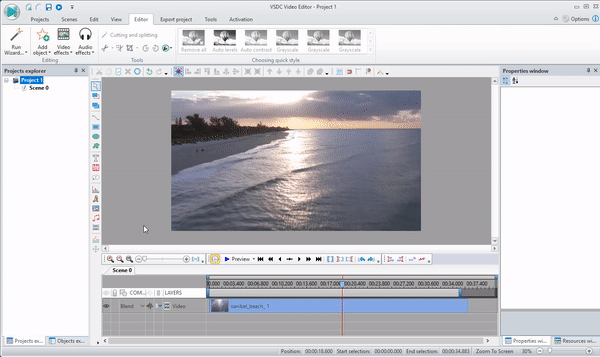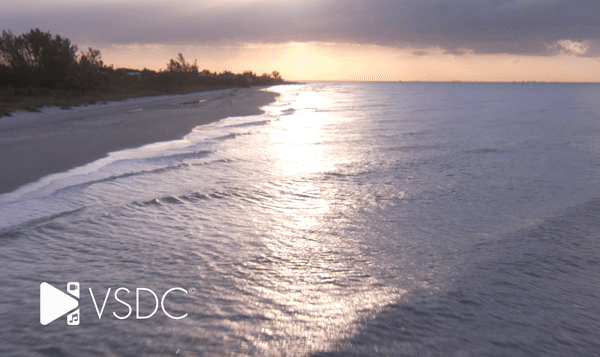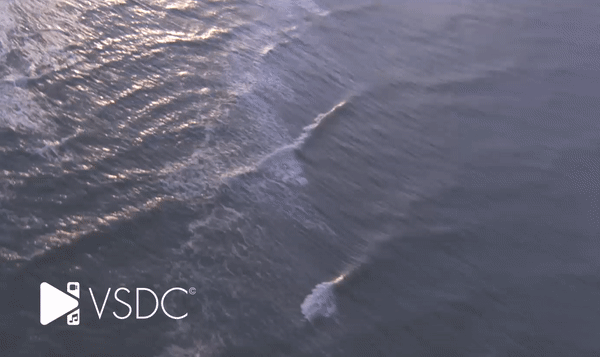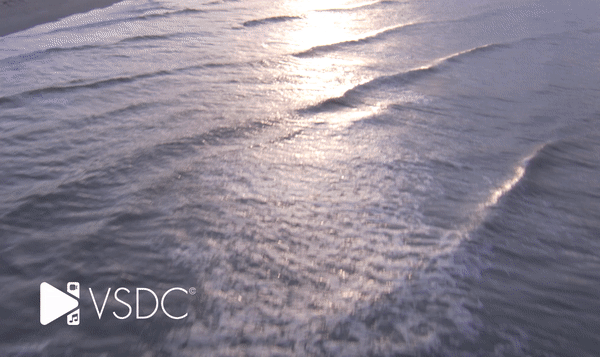Verity Studios might be the only robotics company that can say it has toured with Metallica and performed with Cirque du Soleil. Since 2014, the company has produced autonomous indoor drone shows for those groups and others, including Madison Square Garden, and Princess Cruises.
In June, the company raised $18 million in Series A funding, led by Fontinalis Partners, with participation from Airbus Ventures, Sony Innovation Fund, and Kitty Hawk. The company said it would use the funding to expand its live events business, focusing on U.S. growth, as well as expanding into other commercial verticals.
The company’s founder, Raffaello D’Andrea, was one of the co-founders of Kiva Systems, a pioneer in the mobile robotics arena that was acquired by Amazon in 2012. Robotics Business Review spoke with D’Andrea about the funding, his vision for the company and his thoughts on the public perception of drones.
Q: Kiva Systems and Verity Studios seem like two totally different ventures – do you see any similiarities between the two companies or their technology?
D’Andrea: Although they operate in different markets, the complex engineering challenges faced by both companies are very similar.
At Kiva, our business model called for having more than 1,000 mobile robots loose in a warehouse, running 24/7. The challenge was that in 2003, when we started Kiva, the mean time between failure of mobile robots was on the order of 24 hours; clearly we could not have 1,000 robots breaking down in a warehouse in a day. At Kiva, we had to figure out how to make a large, multi-robot system super-reliable, using inexpensive components.
We had to overcome a similar challenge at Verity Studios. Our flying machines have logged more than 30,000 flights, most of them above people, in the extremely demanding live events environment. Ensuring that our autonomous drones perform reliably night after night was a key priority for us, as was safety. As a result, we have developed some extremely powerful, and cost-effective, failsafe technology.
I’m passionate about making things that no one has ever made before. These sorts of challenges come hand-in-hand with creating something new, and it’s something I find very exciting.
Q: When did you realize that autonomous drones flying together in swarms could be used for entertainment purposes? Was there an “aha!” moment that drove this realization?
D’Andrea: Well before founding Verity Studios in 2014, my co-founders and I had strategically identified indoor drone shows for live events as a fantastic first market for a high-tech company: High visibility, premiums for innovation, and very little competition.
Q: Do Verity Studios produce its own drones, or do you use off-the-shelf components? Do you have multiple designs depending on the effect that you want to achieve?
D’Andrea: Our Lucie micro-drones and all other components of the drone show system were designed, assembled, and quality controlled at Verity’s workshops in Zurich. All software is developed in-house as well.
Q: What’s the largest number of drones that you’ve used simultaneously in an event or show?
D’Andrea: Our largest swarm consists of 99 drones, and it’s touring around the world with Metallica. I would say that the number of drones isn’t as impressive as the way our drone show system is completely client operated and can tour the world with a band.
The fact our system is robust and reliable enough to enable this really speaks to its maturity. Although this is currently our largest swarm, the only limit to the number of drones we can fly in a swarm is the size of the space and the creative concept.
Q: What major technology developments have occurred — either by Verity Studios or from other research — has allowed these devices to be used in this way?
D’Andrea: Safety is of paramount concern when flying drones around and above people. In a live event setting, even more so.
For example, in 2016 we worked with Cirque du Soleil to bring drones to Broadway in the musical Paramour. Our Stage Flyer drones performed in front of large audiences and above actors for almost 400 performances. Having our client operate these large, 1kg drones above people’s heads, live on Broadway eight times a week was only possible because we had engineered the complete drone show system around safety and reliability, from the ground up.
More specifically, we developed drone failsafe technologies to ensure the safety and reliability of our drones in public performances. And this approach did not stop at the technology, but extended to all aspects of the system – from our internal procedures and processes to the training of the show’s automation operator and the theater stagehands who operated the drones, day in and day out. It’s really that bottom-up approach that allowed us to sleep soundly at night knowing that these “dancing lampshades” were flying over people in front of a 2,000-strong audience, night after night, without safety nets. In their one-year run, the drones performed more than 7,000 autonomous flights, without a single safety incident.
What’s great is that the technology underpinning that track record has much broader applicability, far beyond live events. Our drone failsafe technologies can be incorporated into drone manufacturers’ platforms to significantly increase the safety and reliability of today’s drones. The core technology is algorithm-based, and can be applied to any multicopter, including a quadcopter.
For example, when one of the motors of a quadcopter fails, the drone will spin to stabilize itself and perform a controlled landing. The Broadway drones pushed this technology even a step further, creating a quadcopter without any single point of failure. As more drones continue to populate the sky for photography, commercial uses, and industrial applications, safety is a key consideration. It will only grow in importance in the years to come, and we are working with leading drone manufacturers to bring this technology to the broader markets.
Q: What goes into convincing venues, whether indoors or outdoors, that Verity Studios’ system is safe to operate around large groups of people?
D’Andrea: This is changing rapidly, but currently we’re in a situation where drone technology has outpaced regulation in many parts of the world. This means it often comes down to the discretion of the venue. What helps is that, at 50g, our Lucie micro drones are very light. This means they are safe to fly above people, and we’ve had approval to fly in very restricted venues, like airports.
The micro drones also have a guard around them, protecting the drone and its propellers. This, along with the small size of the drones, makes them very safe. Once people see the size and weight of our drones, they can see that they are unlikely to pose a safety concern and we are allowed to fly in venues close to and above people without nets.
Q: How do performers such as musicians, actors, and acrobats feel about working with the drones? What kind of questions do they ask you?
D’Andrea: At first they are cautious and skeptical, but it is amazing to see how quickly they adjust to the reality of having objects flying near and above them. Human beings are very adaptable! I mean, take flying in commercial aircraft, for example. We take it completely for granted, but imagine taking someone from the 1800s — not that long ago, in the context of human history — and plopping them in a plane: they would think that it was magic! Most questions revolve around safety, which of course makes perfect sense, they are the ones that need to be performing with the drones.
Q: What has been your favorite event to produce so far?
D’Andrea: That’s a tough one to answer, simply because of the breadth of the events we have produced so far – airports, cruise ships, concerts, sports arenas, and so on. Having said that, I think that coming out of stealth mode at TED in 2016 was probably my favorite event.
Hearing thousands of people gasp when our micro-drones started to fly over the audience, knowing that we were making history doing something that had never been done before, and the standing ovation at the end of the performance, is an experience that I will treasure for the rest of my life.
Q: How would you describe the public’s comfort level with drones? Because they can be used in different applications, including surveillance and/or by the military, is there any distrust from people? Are people still concerned about safety?
D’Andrea: I have personally found it interesting to see how our reaction to the word “drone” has changed in just the last few years. When I started research in this area many years ago, I would never use the word drone, I used the word “flying machine.” The reason was that the word “drone” had strong military and aggressive connotations. This has definitely changed, and perhaps our work has contributed to this change. People no longer associate drones with military operations, but rather as mechanical wonders that allow us to overcome gravity.
But of course, commercial and consumer drone manufacturers have a big responsibility to ensure the public perception of drone technology continues to be increasingly positive. One big thing they can do is to continue working on the safety and reliability of their drones so they don’t pose a risk to people.
Q: You’ve just raised $18 million in funding – what plans do you have for the money? How big can this market/industry evolve? What’s your ultimate goal with Verity Studios?
D’Andrea: We plan to further expand into the live events market by developing new event technologies and improving existing ones. We currently hold a unique position in the live events market because we are the only company with the capability of doing indoor drone shows reliably and safely. If others in the market catch up, we may have to compete with other players for indoor drone shows.
Our work in live events has also been a great testing ground for our technology and we are exploring other commercial and creative applications of our technology. After all, if our drones can tour the world with Metallica and perform reliably night after night, they can cope with most environments.
Q: What advice would you give to other entrepreneurs in either the robotics and/or autonomous vehicle space?
D’Andrea: First and foremost, have a world-class team. Verity has talented electrical engineers, mechanical engineers, systems and control engineers, software engineers, computer scientists, and industrial designers on the team; all are needed to build robust, reliable, and high-performance robots.





















